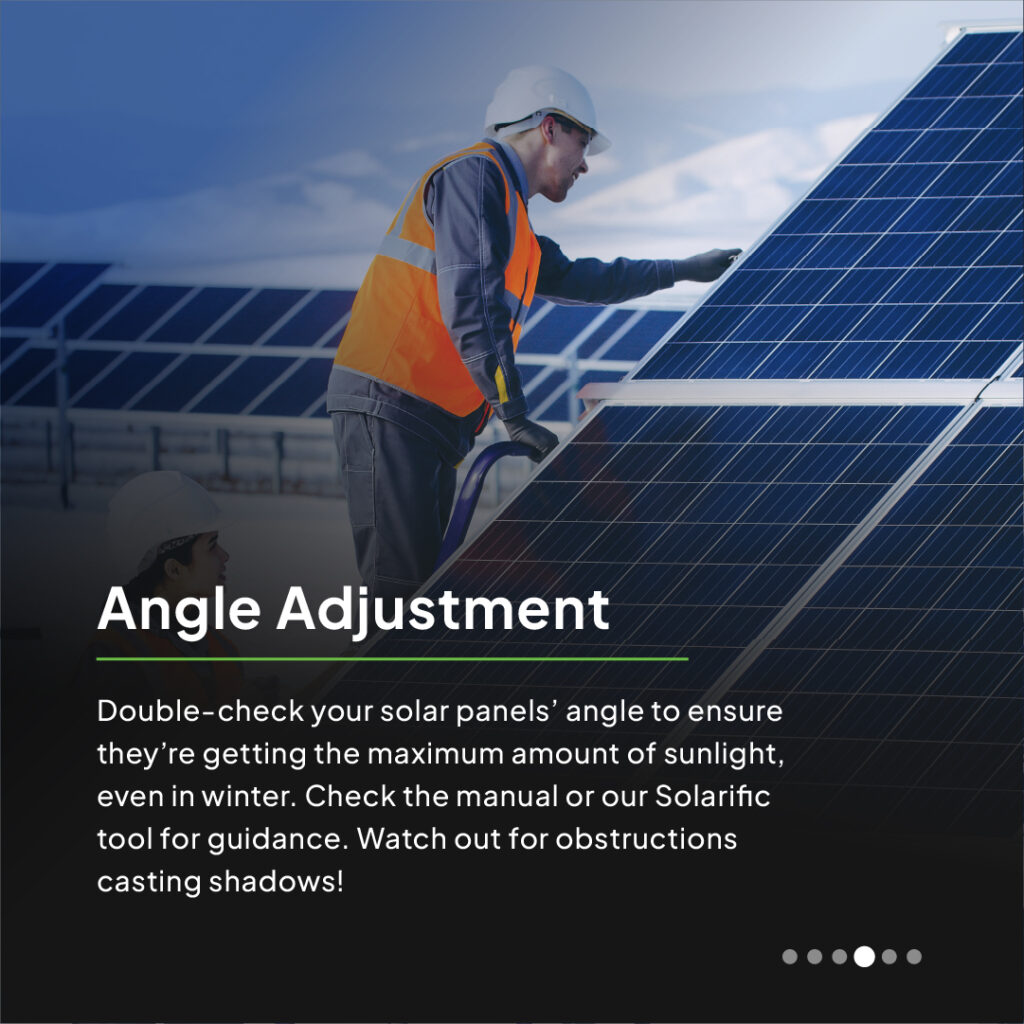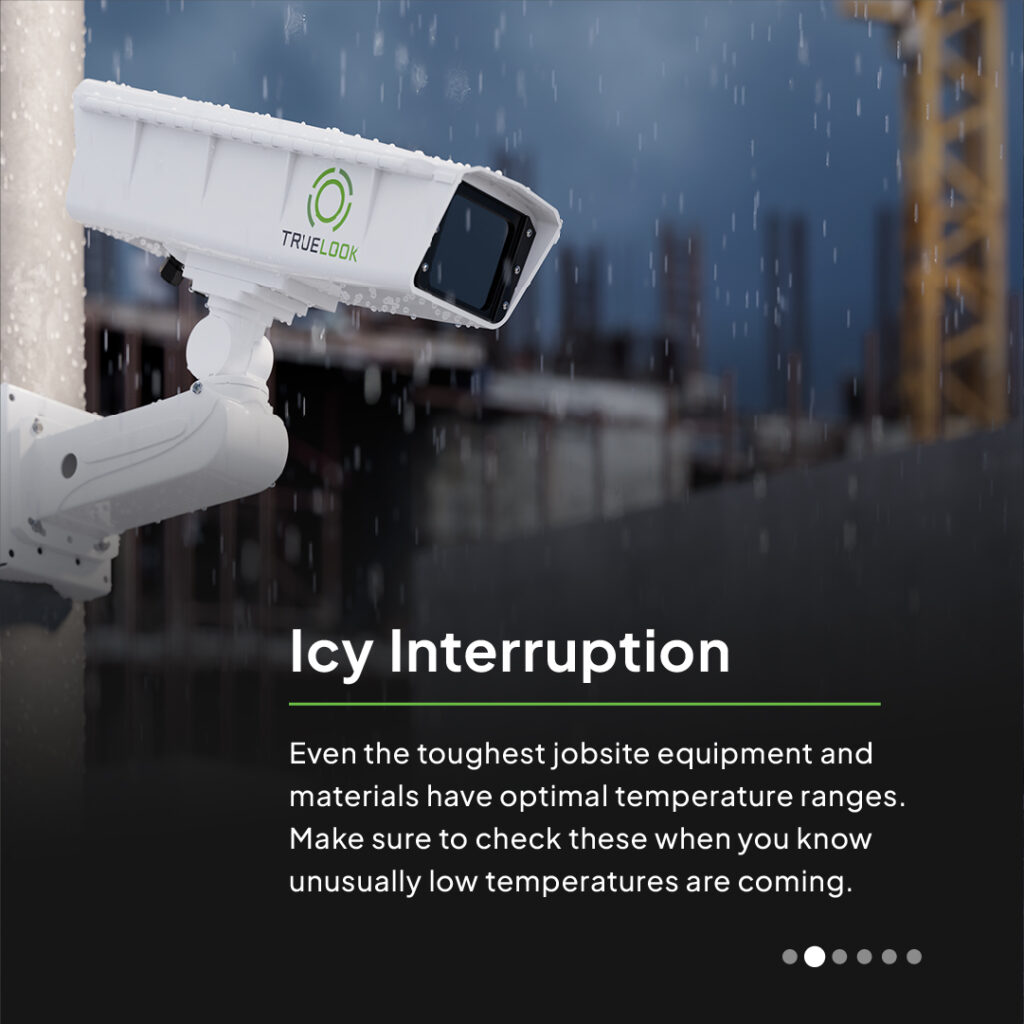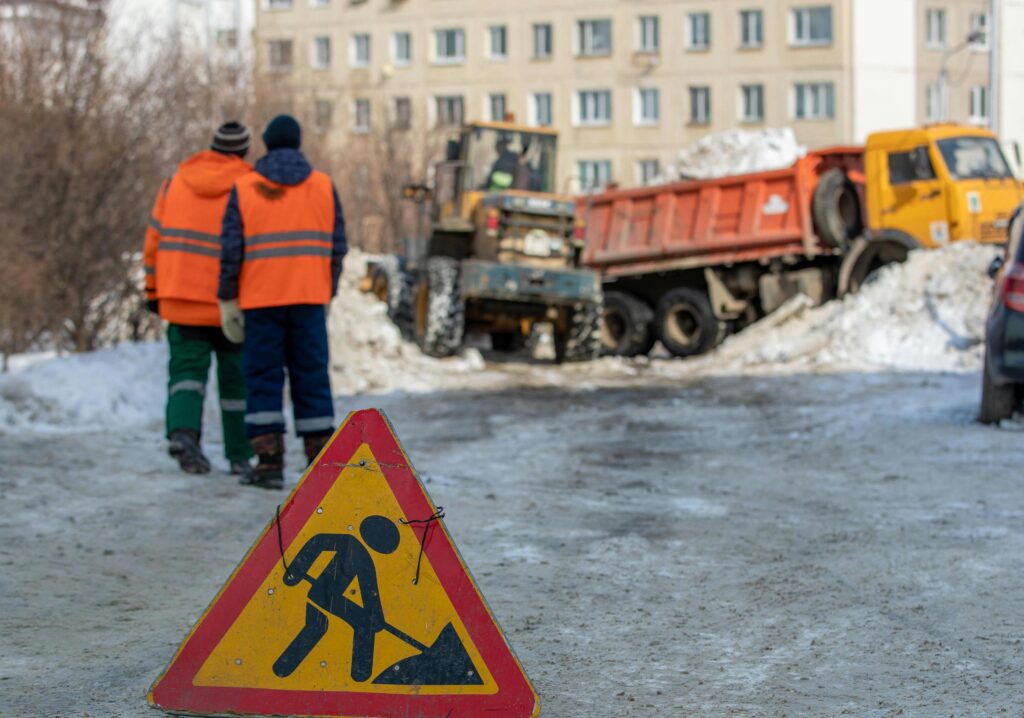Jobsite Winter Preparation
A Complete Guide to Protect Your Equipment
Did you know that bad winter weather causes 45% of construction projects to be delayed? These setbacks cost the global construction industry billions of dollars every year. To avoid these costs, construction managers must prepare their jobsites and equipment for the cold season.
Preparing your jobsite for winter is crucial to avoid costly delays and equipment damage. This guide walks you through essential jobsite winter preparation steps, focusing on keeping your construction cameras and equipment in top shape during the cold season.
Let’s dive in.
How to Prepare Construction Cameras for Winter
The chilly winter months can take a toll on many types of construction equipment. For cameras, unusual or extended weather extremes can affect connectivity, image quality, and power supply. TrueLook has cameras that can operate in conditions as low as -40° F and as high as 140° F, meaning the risk is lower — but no equipment is perfect.
So, we’ve put together a straightforward checklist to keep your cameras in top shape and ensure uninterrupted monitoring and data collection all winter long.
Step #1: Be Prepared for Severe Weather
Most monitoring cameras face the same general issues in the wintertime. To keep them performing at their best, start by checking if they have enough power. Cold temperatures can reduce battery life on solar cameras, so consider using extra power sources or having battery backups on hand.
Next, make it a habit to regularly check connections to keep the live feed running smoothly. Lastly, don’t forget to clean your lenses regularly for clear and accurate visuals. Snow and ice can build up on camera lenses, leading to distorted images.
Step #2: Navigate Your Jobsite Safely
Despite taking the proactive steps above, severe snow storms can still wreak havoc on your jobsite. After severe weather, always wait until it’s safe to access your jobsite. Scan for any potential hazards, like fallen debris or icy surfaces, before proceeding.
Once you’ve addressed any hazards, check all of your cameras and equipment for damage. Make a note of any damaged parts that you may need to replace or repair.
If you find that your TrueLook Cameras do need repairs, don’t hesitate to reach out to our support team.
Step #3: Maintaining Jobsite Solar Panels During Winter
Solar panels operate at the highest efficiency in cold, sunny conditions. However, extended snowy weather can significantly hinder their performance. Here’s how you can make sure your solar panels stay efficient, year after year:


- Regularly check your solar panels for snow buildup.
- If you find snow on your solar panels, allow sunlight to melt it naturally. Manually removing snow from solar panels can damage the surface.
- Inspect cables for damage or fraying. Cold temperatures can make cables more brittle, leading to increased outages.
- Routinely monitor battery levels and voltage to ensure uninterrupted power supply.
Not sure which solar panel angle is optimal for your jobsite’s location? Find the right angle for your location.
Step #4. Leverage TrueLook Support
The winter months can be tricky to navigate, but you’re not alone in this. Our team is here to assist you with any camera challenges you face.
Bonus Tip: If you encounter connectivity issues, take a picture of your camera’s cellular modem lights. This picture can assist the support team in quickly diagnosing the problem.
Jobsite Winter Preparedness Tips
Now that you know how to protect your cameras and solar panels, it’s time to dive into the steps you need to take to protect your jobsite in its entirety.
Tip #1: Monitor the Weather and Plan Accordingly
Stay ahead of the game by monitoring weather forecasts days (and even weeks) in advance. This allows you to plan tasks accordingly, avoiding extreme conditions when possible. TrueLook’s weather data can help by showing daily weather information, upcoming predictions, and a log of historical weather.
For example: If you see a cold snap coming, schedule outdoor tasks for the warmest parts of the day to minimize your workers’ exposure to cold temperatures. Additionally, provide necessary equipment to your workers if you know that they’ll need to work during colder hours.
Tip #2: Manage Exposure & Provide Warmth
When planning your day or week, schedule projects in shorter blocks to reduce prolonged exposure to cold weather.
Working areas
When your workers have to be out in the cold, make sure that they wear warm clothing, non-slip footwear, gloves, and hats to prevent hypothermia and falls. You can also use radiant heaters or shield work areas from drafts to provide warmth.
Non-working areas
You should create heated spaces for workers when they’re taking breaks. Encourage your workers to take frequent breaks in these designated areas to warm up, avoiding any dangerous cold-related health risks or incidents.
Tip #3: Daily Site Checks & Work Area Prep
Employers must clear snow, spread salt or sand, and chip away significant ice areas before work on a site can begin. Make it a habit to clear snow and ice from overhangs, rooftops, pathways, scaffolding, and equipment to proactively prevent falling hazards.
Bonus Tip: Under no circumstances should workers use scaffolding when ice and snow are present.
Tip #4: Vehicle Readiness & Hazards Awareness
Inspect vehicles in your jobsite for functionality and equip them with winter emergency kits. Winter emergency kits can include items like:
- Ice scrapers
- Blankets or sleeping bags
- Warm clothing (gloves, hat, scarf)
- A flashlight with extra batteries
- First aid kit
Tip #5: Training Your Workers
Educate your workers on frostbite and hypothermia prevention. In training, teach them how to recognize the symptoms. Additionally, have a clear plan in place in the unfortunate event of a health emergency.

How TrueLook’s Features Help
When it comes to construction projects, winter weather doesn’t have to be difficult to track. TrueLook’s platform offers a range of features to help you navigate winter challenges and make informed decisions.
Using TrueLook, you’ll have access to both current and historical weather data to make data-driven decisions based on past patterns and trends. You can also stay updated with current weather conditions, including radar, hourly forecasts, and 14-day predictions. This feature enables you to proactively manage projects, mitigate delays, and reduce unexpected costs caused by adverse conditions.
Additionally, our live viewing feature allows you and your stakeholders to see the jobsite without anyone having to travel in dangerous weather conditions. Plus, TrueLook’s 24/7 security recordings and time-lapses provide visual evidence for weather-related delays.
Prepare, Protect, and Be Proactive
As winter approaches, don’t let the cold weather catch you and your team off guard. By following the comprehensive steps outlined here, you’ll enhance your operations, protect your equipment, and keep your workers safe.
Winter can be challenging, but with TrueLook’s guidance and technology at your side, you’ll be well-equipped to tackle the season with confidence. Our support team is always ready to assist you, so don’t hesitate to call or visit our support website for more information.
